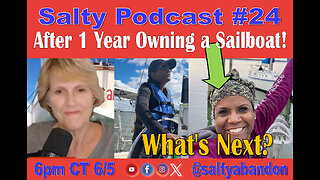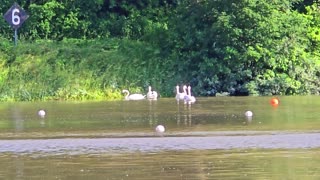World’s Toughest Boat Trips | Tanzania | Free Documentary
This series explores some of the most fascinating and hard-core boat journeys on the planet. We undertake epic journeys by boats in some of the toughest environments on earth. During our journeys we look at how the technology of boat travel has been adapted to survive, trade with and connect isolated communities.
Starting his journey at the southern end of Lake Tanganyika, the world’s largest freshwater lake, Zay travels north for over 300 miles on the extraordinary ‘Liemba’, which is not only said to be the world’s oldest surviving passenger ferry, but also has an incredible wartime history. The imposing 230 foot long ship, originally named the Graf von Goetzen, was built in 1913, when Tanzania was part of colonial German East Africa. At the start of WWI in 1914, the ship was converted into a warship, fitted with powerful guns to fight ships from nearby British and Belgian colonies. In 1916, however, the ship’s German commanders were forced to scuttle it in order to prevent its capture by the British or Belgians. The location of the sunken ship was soon discovered, and when the war ended in 1918, the British and Belgians attempted to lift it up from the lake bed. In 1924 it was finally raised to the surface, and astonishingly, despite being underwater for 8 years, was in good enough condition to be placed back into service as a passenger ship. Today, a century on, it continues to provide a vital service ferrying hundreds of local Tanzanians up and down the lake. After a fantastically enjoyable two-day journey aboard the Liemba, stopping at remote villages along the way, Zay disembarks at Kigoma, towards the northern end of Lake Tanganyika.
Heading on from there in a ‘lake taxi’, that is a small overcrowded open boat carrying over 100 villagers together – Zay reaches Gombe Stream National Park, where he goes trekking through the forest in search of wild chimpanzees. Zay’s luck is in, and he has a rare and remarkable encounter at close quarters with an extended family group of over 20 chimpanzees. 150 years ago, the central African region around Lake Tanganyika was a main location where slaves were captured, an estimated 1.5 million of whom were force-marched over 750 miles to the coast of the Indian Ocean, before being shipped by dhow to the slave market on the island of Zanzibar off the Tanzanian coast.
-
 8:28
8:28
jontyknine
18 days agoa trip through Pietermaritzburg
-
 14:16
14:16
jontyknine
18 days agoTrip to Howick and Boer War Memorial
30 -
 3:25:36
3:25:36
TeslaWirelessRadio
18 days agoThe New Adventures of Tarzan (1935 American film Serial)
55 -
 1:01:57
1:01:57
S/V Salty Abandon
18 days agoSalty Podcast #24 | ⛵ Sailing Dreams: One Year with a Sailboat! | First-Time Owner's Journey!
2 -
 0:59
0:59
The Historical Conquest Channel
18 days agoArctic Thule Tribal Hunter Explains Life in the Land of Ice & Snow, Upper North Americ
71 -
 16:30
16:30
Endless Journey
17 days agoKamphaeng Phet Historical Park UNESCO World Heritage – South Zone - Thailand 2024
8 -
 1:31:20
1:31:20
Ann Vandersteel
17 days ago6.8.2024 RIGHT NOW W/ANN VANDERSTEEL: OCEAN CUP: OFFSHORE RACING FOR THE WORLD RECORD
4.98K6 -
 1:05
1:05
ILoveTheNature
16 days agoSwans swimming between buoys / beautiful white swans in a river.
133 -
 6:35
6:35
jontyknine
17 days agoUmgababa drive through
3 -
 2:10
2:10
Animal Daily Trivia
13 days agoThe Secret Lives of Underwater Creatures: Amazing Ocean Trivia
41